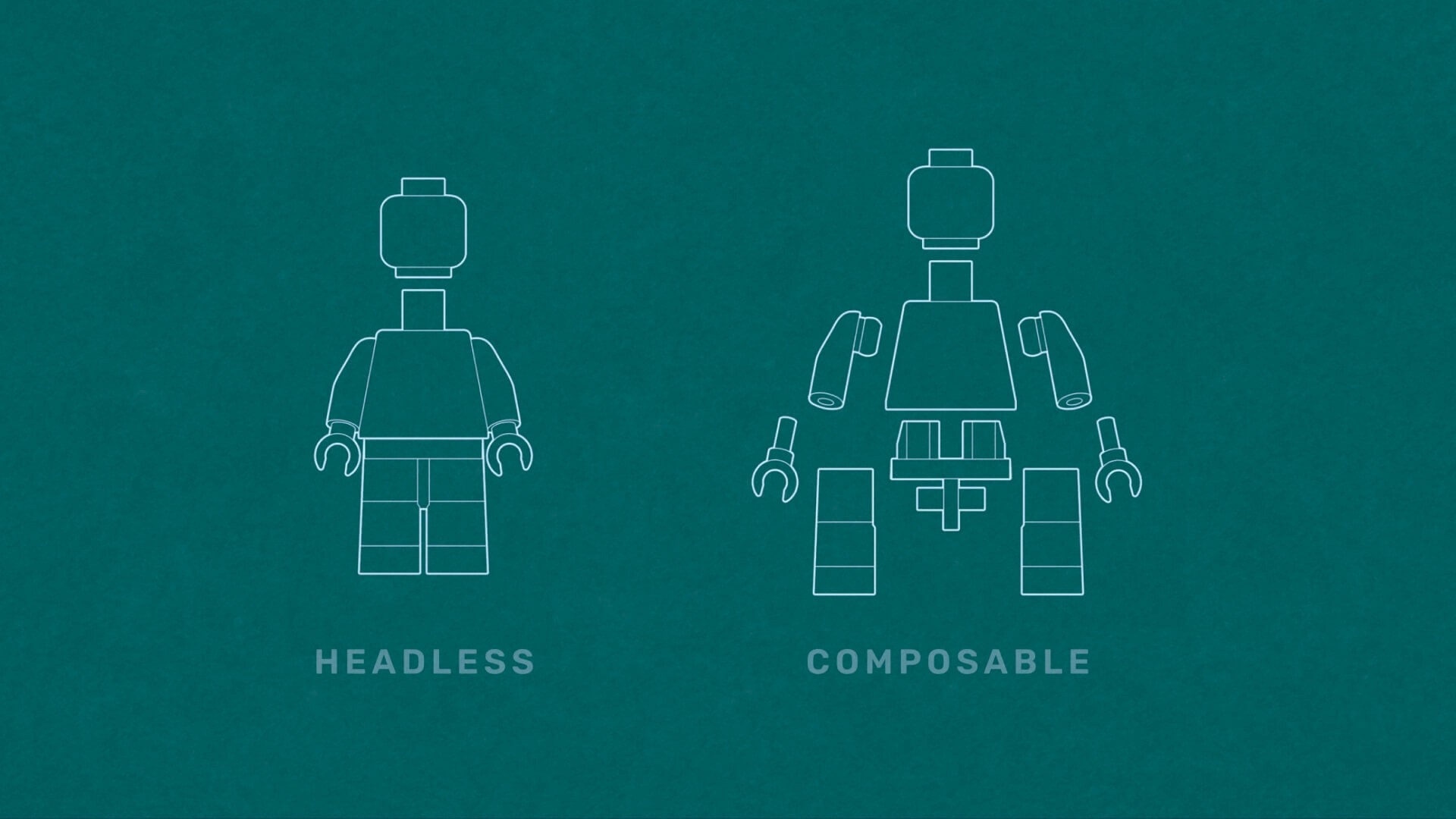4 promising approaches to ecommerce
Category
Publish Date
Apr 15, 2022

Headless and Composable Commerce
If you’re active in the ecommerce market you’ve probably heard of terms like headless and Composable Commerce. But what exactly is it and how can online retailers benefit from it?
Let’s start with the difference between those two:
Headless is the ecommerce approach by which the backend from a webshop is decoupled from the frontend, and by doing so, it helps ecommerce merchants to innovate faster on the front-end, the user experience side, only.
Composable Commerce is what comes next. It gives you complete freedom to work with the software vendors you prefer by also separating the backend services from each other. It gives you unlimited flexibility and scalability to build the ecommerce platform your business needs, from frontend to backend.
Now you can imagine that both bring many advantages for online retailers that want to grow but are held back by their current ecommerce platform. They often face challenges when they haven’t made the switch yet from their monolith to a headless or even Composable Commerce approach.
Think of: Customers with no paid plans (or only site plans) will be automatically transitioned to a free Starter Workspace between late February and mid-June.
You have issues with your frontend’s performance like page speed
You want to work with different software vendors for best user experience but your platform doesn’t connect with them
You worry about downtime on big days like Black Friday
You feel locked-in because you don’t want to do a full re-platforming
Building custom features is not even an option, it costs you too much time and money
You want to serve new markets but your current platform doesn’t allow you to
Composable Commerce
Huge brands like Zalando and Bol.com are already relying on a composable approach and it’s time for mid-market to enterprise merchants to make the shift to Composable Commerce as well. It is the logical step towards delivering on customer demands across multiple touchpoints. Gartner says: ‘Composable Commerce must be adopted for the future of applications.’ and ‘By 2023, organizations that have adopted a composable approach will outpace the competition by 80% in the speed of new feature implementation.’ And this future is already here. Jump on the train now while it’s starting and get miles ahead of your competition.

Customer Centricity
Placing the customer in the center of attention instead of the product or service is basically what the term customer centricity means. But why is this important and how can this be focused on from the perspective of an online retailer?
When a company states that they work with a customer centric approach, this should in the base case not only mean that they focus on their customers in a slightly different way than their competitors but more like a complete strategy and philosophy behind their everyday business. The company's goal should be to provide their customers with long-lasting added value. This can take various forms and usually follows the goal of retaining customers in the long term and thus also increasing the customer lifetime value.
One example showing how a company can focus on the customer and build long-term relationships is by offering attractive loyalty programs. However, this does not mean a one-time benefit that customers receive when they sign up for a newsletter, for example, but rather an engaging loyalty program from which customers can benefit in the long term. Many companies already offer a credit point system, in which customers can collect credits for various actions, which can then be used in the online store in the course of selected actions in order to get products cheaper or to be granted earlier access to limited editions. These credits can be collected with every purchase, when subscribing to the social media channels, when recommending products to friends or similar.
Another aspect that focuses on the customer and can contribute to a long-term relationship is personalization. It is becoming increasingly important to target each customer with those products or services that are really relevant to them. A one-size-fits-all solution is no longer sufficient to satisfy the individual wishes and preferences of different customers in such a way that they are permanently happy with a company. This already starts with the fact that companies should take care to adapt their newsletters to different target groups of the company. However, this does not only include the distinction between men and women, but rather interest-based targeting, which allows those contents to be delivered that are relevant to the respective customer.
There are many more ways companies can manage to adopt a customer-centric approach. Ultimately, the most important thing is that companies have a clear strategy and philosophy, and if this is designed to put the customer at the center, this should also be reflected in the company's activities.
Augmented Reality for live-shopping experiences in online shops
Another important topic in ecommerce worth mentioning is Augmented Reality. With fierce competition in almost every industry, it’s more important than ever to provide best-in-class shopping experiences. Online retailers are experimenting with new technologies every day and Augmented Reality is one of the reasons why online retailers are successful. And why is that? Let’s have a look at the following example: AR makes it possible for customers to use virtual try-ons. These try-ons show the customer how a certain product will look when they wear it. A real shopping experience directly on your phone! Nike is one of those brands that allows their customers to try on new sneakers with AR. The campaign aimed at bringing together a creative community and the technology allows people to try on their favorite sneaker without having to leave the house. Another example of successful try ons are beauty brands, who give their users the opportunity to virtually try on various make-up products.

Customer experience goes beyond a well-performing webshop. With the constant changes in consumer behavior, it’s crucial to provide excellent experiences throughout the complete journey; from the first touchpoint to an actual purchase.
Storytelling
Why is storytelling so important? Doesn't it unnecessarily exaggerate topics that could also be explained in a very simple and straightforward way? You can almost say "it depends". After all, storytelling is not the most appropriate approach to spread information in all areas of a company. However, if we take a closer look at the content sector of a company and all aspects of external communication, we can see that storytelling clearly plays a major role and offers companies a new way of communicating information to the outside world. Storytelling does not mean telling untrue stories that promise the wrong things just to get people to take certain actions, but rather it means wrapping information in compelling and engaging stories to communicate on a more emotional level. In this way, founder stories, information about new products or services, presentations and much more can be shared in a way that makes it easier to absorb information. It is now scientifically proven that people’s brains are oriented towards telling, understanding and retaining stories and that stories are remembered up to 20x better rather than observing clear-cut business inputs.
So how do you start the "storytelling" project in your own company? First of all, it is a good idea to listen to and learn from well-known personalities who are pioneers in telling good stories. Think about which stories fit your company, your products or services and how you can communicate them in a compelling and still professional way. It's also important to get feedback so you can improve your storytelling and keep developing when it comes to maintaining excitement and telling stories. A story is usually divided into five parts which should be considered when figuring out a way to communicate it to the outside world:
A hero.
A goal.
Conflict.
A dramaturgy.
Resolution.
Let us know how you do it
Have you already gathered experience in one of the topics mentioned or do you plan to do so in the future? We are looking forward to your input and the interaction! Contact us!
Trusted by















